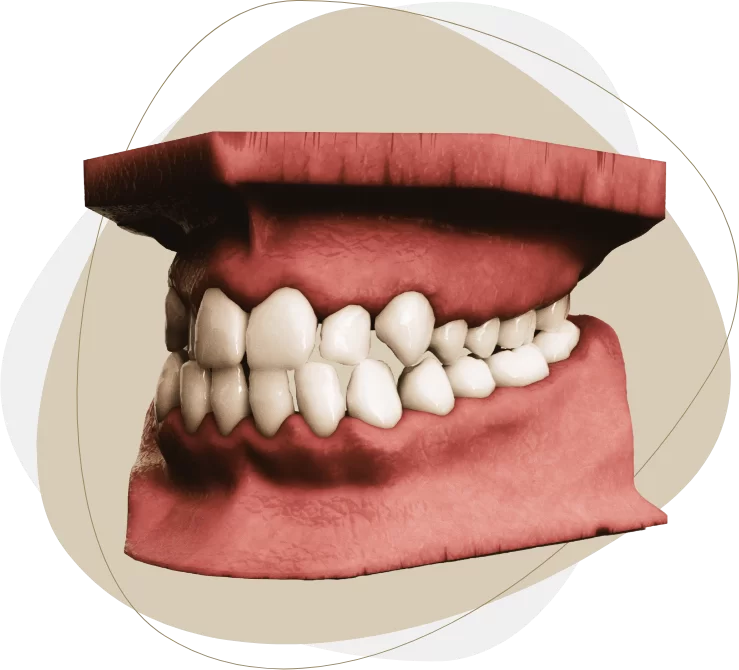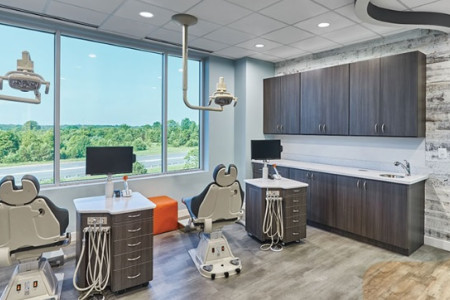Table of Contents
- Impression Taking - Traditional vs. Modern methods - intraoral scanner
- SLT Diagnostic Models and Software
- Communication with the patient and individual treatment plan
- Monitoring Treatment Effects
- Advantages of the 3D Scanner in Orthodontic Treatment
- Intraoral scanner and its types
- Precision in Treatment Planning
- Digital orthodontics can be used for many types of orthodontic appliances.
- Patient safety and comfort when using an intraoral scanner
- Integration of Telemedicine in Communication with the Patient
- Patient Education Through 3D Visualization
- Summary
Impression Taking - Traditional vs. Modern methods - intraoral scanner
Modern digital orthodontics starts with planning orthodontic treatment. In order to create a virtual treatment plan, impressions must be taken of the patient. There are two ways to do this.
The first method is for an orthodontist to take impressions using the traditional method, using impression trays and a specialized material. Then, using a laboratory 3D scanner, we scan and create virtual impressions of the patient's teeth.
The second such treatment method, and a more modern one, is direct scanning of the patient using a scanner
3D – intraoral scanner. This method is faster and more comfortable for the patient. Digital diagnostic models facilitate communication between doctors and dental technicians. However, not all offices have it yet.
SLT Diagnostic Models and Software
Modern orthodontics not only uses digital impressions, providing virtual impressions of the patient's teeth, but also uses specialized software. Doctor-patient communication begins, as we mentioned at the beginning, before orthodontic treatment begins
Digital diagnostic models obtained by a 3D scanner facilitate communication between the doctor and dental technicians. These models are precise and help develop an orthodontic plan tailored to the patient's individual needs.
Communication with the patient and individual treatment plan
The planning process requires cooperation between the orthodontist and dental technicians. An individual treatment plan prepared for an individual patient takes into account: wearing time, type of orthodontic treatment, condition of the patient's oral cavity, selection of appropriate orthodontic appliances, discussion of the correct positioning of teeth, and the expected effects of orthodontic treatment by the patient. Such planned teeth straightening effects are discussed with the patient.
Communication with the patient begins at the planning stage. This can be done via e-mail, but also by inviting the patient to the orthodontic office for a meeting with the attending physician. During this meeting, the patient sees his teeth on the monitor screen.
Monitoring Treatment Effects
With digital orthodontics, you can monitor the effects of orthodontic treatment hassle-free. Comparing the achieved results to the originally established plan becomes routine during follow-up visits. This enables ongoing assessment of treatment progress and adjustment of the virtual treatment plan if necessary.
Advantages of the 3D Scanner in Orthodontic Treatment
Treatment – orthodontic treatment using a 3D scanner has many advantages and allows for precise treatment planning. These scanners are used to make various types of braces, from removable braces, through soldered braces, to modern orthodontic overlays and retention appliances. Digital orthodontics gives the doctor a lot of options before putting on braces, allowing for more precise planning.
Intraoral scanner and its types
Intraoral scanners are one of the most developing technologies in dentistry. Over the last 10 years, new companies offering intraoral scanners have appeared on the market. While offering diverse possibilities.
The intraoral scanner can scan in color or give us a monochrome image (grayscale). Currently, the standard optical technology used is an HD camera and an LED light source. The accuracy of such scanners should be at the level of 15 μm for a single tooth and 25 μm for the entire arch. (The parameter should be described by the ISO standard).
Precision in Treatment Planning
Thanks to digital orthodontics, precision in treatment planning has become a key element before braces. Orthodontists are able to accurately predict how a patient's teeth should position after treatment. This is not only beneficial for the doctor himself, but also has a positive impact on communication with the patient. The patient is able to see visualizations of future treatment effects, which increases understanding and trust. Treatment becomes more patient-friendly. It is also a great convenience for the treating doctor to present his vision of treatment.
Digital orthodontics can be used for many types of orthodontic appliances.
The 3D scanner is used to perform all types of work. From removable braces, soldered braces, modern orthodontic overlays and even retention appliances. Digital orthodontics gives the doctor great opportunities when choosing a device. Treatment planning has become more precise. This benefits the patient's treatment and has a positive impact on doctor-patient communication. The patient can actually see what the effects of orthodontic treatment will be.
Patient safety and comfort when using an intraoral scanner
Modern intraoral scanners not only offer precision, but also emphasize patient comfort and ensure are safe diagnostic procedures. Non-contact scanning eliminates the discomfort associated with traditional impressions, which makes patients more willing to proceed to this stage of treatment. Additionally, the scanners are safe for patients with various needs, including those with hypersensitivity to various substances used in traditional impressions.
Integration of Telemedicine in Communication with the Patient
In the era of digital orthodontics, when communication with the patient is crucial, telemedicine is increasingly used. Patients can send photos of their teeth, and the orthodontist can provide advice and assess the progress of treatment remotely. The integration of telemedicine with 3D treatment planning opens up new possibilities for orthodontic care, especially for patients living in remote locations.
Patient Education Through 3D Visualization
One of the important aspects of digital treatment planning is the ability to educate the patient through 3D visualizations. The patient can see what changes are taking place in real time, making the treatment more understandable and engaging. Patient education about the stages of treatment, the benefits of individual therapies, as well as awareness of the final effects contribute to better cooperation and satisfaction with orthodontic treatment.
Summary
Modern digital orthodontics, based on 3D scanning and advanced software, significantly speeds up and improves the process of starting orthodontic treatment. Direct patient scanning, diagnostic models and precise treatment planning enable you to achieve excellent results. Monitoring the effects of treatment becomes easier, and communication with the patient becomes more interactive and understandable.
An intraoral scanner in an orthodontic office is a step towards the future, where technology supports and facilitates the work of specialists, contributing to even more effective and comfortable treatment in the orthodontic office.


